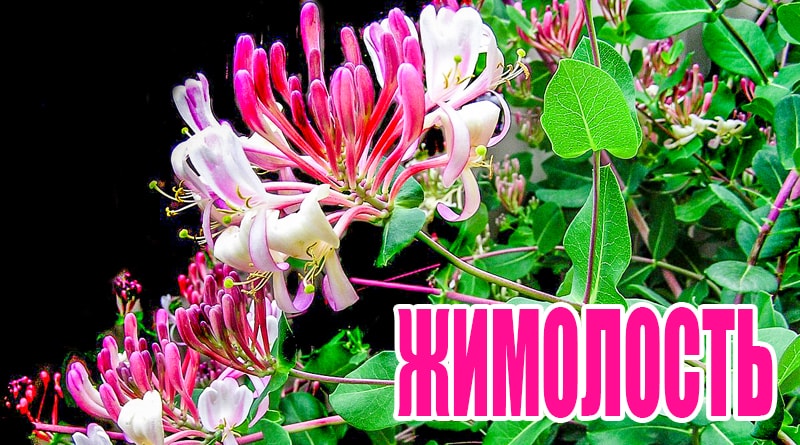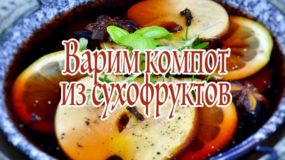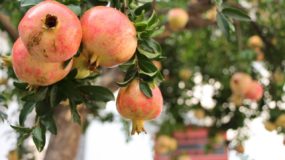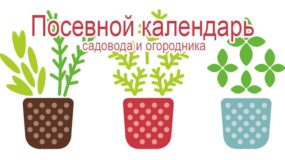Honeysuckle is a unique plant that is increasingly found in gardens and parks. The shrub is planted as a decorative hedge, and edible varieties, and as a berry culture. The fruits are universal, they make jelly, jam, liquors and liquors, they are frozen and dried. All parts of the plant are widely used in folk medicine for the prevention and treatment of various diseases.
What is honeysuckle?
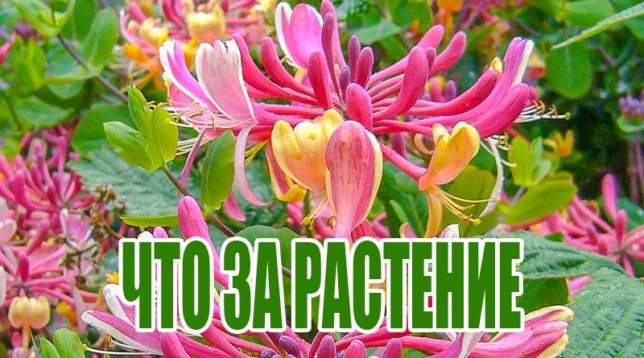
Honeysuckle is a perennial ornamental and berry shrub with a lush crown. The name (Lonicera) “honeysuckle” is due to the famous physicist and botanist Adam Lonitser, who lived in the 14th century. More common in the northern hemisphere, in areas with a temperate climate. A plant can have either a straight or creeping or curly stem. Regardless of the species, it blooms early, filling the air with a charming aroma, which attracts a large number of bees.
Where and for what is used
Every year, honeysuckle conquers more and more garden and garden plots. There is something to love for it! It blooms in May one of the first, pleases with delicate buds with an almond-honey smell, and the fruits ripen earlier than other plants.
They appreciate it for its ease of care, stable crops, especially in areas with late spring and short summers, where nature does not pamper with a special variety of fruits. It easily tolerates harsh winters, and even during flowering frost at -5 does not affect a good harvest, which is unacceptable for other fruit crops.
Decorative climbing varieties are used for vertical gardening of arbors, pergolas and arches. Aromatic hedges are formed from plants with a lush and dense crown, blooming almost until the frost.
Culinary experts love berries for their peculiar taste, aroma and a large number of pectin substances, thanks to which dense jelly is obtained from it, they are used as a harmless dye. It is good in jam, in compote, it can be dried, frozen, ground with sugar, make liquors and wine, and what a delicious filling for pies it turns out!
Widely used in folk medicine in the treatment of gastrointestinal diseases, anemia, hypertension, skin diseases, respiratory system and others. In honeysuckle, not only berries are healing, which, in terms of vitamin C content, give odds to lemon, but also all parts: leaves, bark, flowers.
Plant varieties
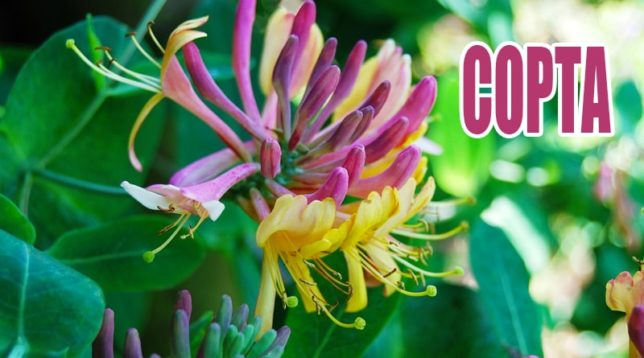
More often in the gardens planted honeysuckle, which has edible berries. Favorite Russian varieties: Pavlovskaya, Borel, Blue spindle, Amphora, Gzhelka, Vasyugan, Gerda, Sinichka, Nymph Sineglazka, Bluebird, Bochkarskaya, Leningrad giant, Cinderella, Kamchadalka and Chernichka. If you wish, you can easily find a detailed description and reviews about each of them. There are varieties of a newer selection, but they can fail in the frosty winter, and these have been tested for years by several generations of gardeners. Varieties differ in the ripening period of the crop, the height of the bushes and the shape of the branches, the taste of berries.
Undersized
- Gourmet - the bush is compact, the yield is high, but the berries are not very large, weighing about 0.7 g. Fruits without bitterness are characterized by low crumbling. The variety is suitable for hedges.Plant “Nymph” and “Nizhny Novgorod Early” next to it for pollination.
- Omega - also applies to undersized varieties with a rounded crown, but the berries are larger and reach a weight of up to 1 g, cannot boast of high yields, but the berries practically do not crumble. Fruits without bitterness, sweet and sour, the plant is planted like a hedge.
Medium
- Nymph - A compact bush with an oval crown and dark green leaves. The berries are large by 3 cm, and weighing up to 1.2 g, with careful care, each bush is happy with a 1.5 kg crop. The berries have a pleasant sweet taste, slightly sour. Plant nearby for pollination with "Violet", "Omega", "Blue Spindle".
- Leningrad giant - the name speaks of the place of selection and the size of the fruit. The source material during the breeding was the seeds of Kamchatka endemic. The berries ripen early, can reach a size of up to 4 cm, but more often - 3 cm, have a dense skin, the yield of the bush reaches 3 kg. The peculiarity of the variety, in addition to the size of the berries, is their arrangement - in clusters, which accelerates the harvest. It tastes like fruits without sourness and bitterness; it does not fall off the bushes for a long time.
Tall
- Volkhova - bush with an oval dense crown, tall with thick shoots. Received the name from the river flowing in the Leningrad region, where it was withdrawn. Refers to varieties with an average ripening period, the fruits appear by mid-June. Berries reach a length of 1.7 cm, and the weight of one is up to 0.8 g, they have a fairly dense skin, the taste is sweet. Harvest up to one and a half to two kilograms from the bush. Shedding is negligible, pollinated by bumblebees, planted next to other varieties, for example: Lazurnaya, Pavlovskaya. Resistant to severe frost.
- Honeysuckle Tatar - ornamental shrub, grows up to 2.5 meters, frost-resistant, drought-resistant, when cutting, you can ask the crown any shape. A plant 3-4 years old begins to bloom in May-June, bright berries begin to ripen in July-September, they are inedible. Suitable as a decorative fence.
- Honeysuckle - the most common fragrant honeysuckle in landscape design, its curly stem can reach 6 meters. Translated means "goat leaf", grows to a size of 10 cm in length and 4 cm in width. Beautiful large flowers of pink or cream color with a delicate aroma, which intensifies in the evening. They make alcohol tincture, and from the leaves - a decoction, which gargles with angina and wash their hair with hair loss, it helps with colic.
Kinds
Honeysuckle berries, regardless of species, ripen earlier than other fruit crops. Some bloom at the same time with it, but give fruits later. Berries of different types of plants in terms of ripening, can vary by a month and a half.
Early
- Titmouse - a relatively young variety, bred in Moscow in 1998 A.G. Kuklina and A.K. Skvortsov, employees of the Main Botanical Garden. It is characterized by abundant fruiting, does not crumble, withstands flowering light frosts without consequences for the crop. Berries without bitterness, fragrant, weighing up to 1 g, sweet and sour taste, elongated with a characteristic whitish bloom. Harvest begins in the second or third decade of June.
- Strawberry - Another honeysuckle variety of early ripening, breeding of the South Ural Research Institute of Horticulture. High-yielding bushes with strong shoots, up to 2 meters high, resistant to freezing, prefer partial shade or sun, are not capricious in care. Berries weighing up to 2 g, when ripe for a long time held on branches, very sweet with strawberry flavor.
Later
- Dove - edible variety with good yield. From an adult bush under favorable conditions, you can collect about 2 kg of fruit. The berries are elongated, reaching a mass of up to 1.6 g, dark blue in color with a characteristic whitish bloom, thin skin and delicate fragrant flesh.It tastes sweet and sour with a pungent light bitterness, appear by the end of June or early July, and do not show off from the bush for a long time.
- Serotina - curly honeysuckle, decorative, blooms with beautiful fragrant flowers, then they turn into red fruits. It begins to bloom in June-August, and continues even until September-October, if dried inflorescences are removed on time and the fruits are not formed. The aroma is thin, reminiscent of lime, in the evening the fragrance is felt stronger.
- Liana - It can reach 3-4 meters in height, with an annual increase of up to a meter, planted with support. For winter, shoots are carefully released from support, laid out on the ground, covered with spruce branches and sprinkled with a thick layer of dry leaves.
- Volkhova - Honeysuckle edible. Medium yield: up to 1.5 kg per bush. Berries with a strong skin weighing up to 0.8 g, reach a length of up to 1.7 cm, are not bitter, fragrant, have a very delicate finish, reminiscent of strawberries. In leaving it is not capricious, frost-resistant, likes partial shade and regular root watering.
How to plant and care for honeysuckle
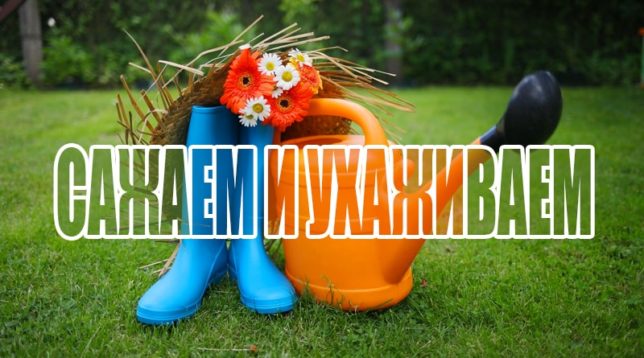
Honeysuckle refers to unpretentious crops, but still requires some attention. She prefers moist, well-warmed, fertile soil, but the lower branches should be in the shade. Bushes should be protected from the wind. Any soil except sandy is suitable. Do not plant in areas where groundwater is close to the surface.
If the seedling has an open (without a lump of earth), root system, then it is better to plant it in early autumn. At this time, the growth of shoots in plants ceases, a dormant period begins. If the seedling has closed roots, then during the entire growing season.
The bushes reach their maximum growth, if they are not trimmed, by the age of seven, the average length of about 2 m. At this time, it is recommended to thin out, cut out dried, lying on the ground and broken branches. Honeysuckle is not currant, it does not require strict pruning, but it does not tolerate frequency either.
Each adult bush can reach a diameter of up to 2 meters, up to 15 skeletal brushes can grow on it.
Step-by-step landing plan
- 4 days before planting, dig square holes (40x40x40 cm) with a distance of 1.5-2 m between them for small varieties, and 2.5-3 m for tall ones.
- Place any drainage layer (crushed stone, shards, expanded clay, broken brick, etc.) into the pit.
- Fill the pits with fertile soil mixed with two buckets of compost, a kilogram of ash and 50 g of superphosphate. For sandy compost soil, about 3 buckets are taken with the addition of, if desired, from 4-5 kg of clay per 1 square meter.
- Spill the wells well with rain or settled water.
- Pour an earthen cone in the center of the hole, set the seedling carefully on top, and carefully straighten the roots.
- In small portions, carefully sprinkle the roots with earth, leave the neck free. Pour a large amount of water into the hole so that the poured earth subsides. If necessary, add more soil.
- Mulch the earth around the trunk to retain moisture in the depths and attract earthworms to loosen the soil.
Trimming after planting should only dry stems and twigs located inside the crown, since traditional pruning delays the development of the seedling and the onset of fruiting.
Proper care
Harvest can be harvested in a couple of years, however, it will be small. But this is temporary, and over the years, depending on the variety, will reach 2 kg per bush. Honeysuckle is a picky plant, it practically does not get sick and, with proper care, will delight a stable crop for up to 30 years or more.
In autumn, you need to thin out the crown from the dried branches that obscure the plant. In spring, add organic matter to each bush, and when the snow begins to melt, feed with nitrogen.With the appearance of flowers, and then fruits, water bushes with an aqueous solution of ash. Prevent the formation of crust along the trunk, the soil should be airy and allow the roots to breathe. Loosening is careful, as the root system is close to the surface, and watered “under the root”.
How to propagate honeysuckle
The easiest way to propagate the honeysuckle at home is to cut 30 cm of tops from the bush with a secateurs in the spring, put the “bouquet” in water and plant about a month later, when the roots appear. For faster appearance in water, you can add special tools. Young crops will give the first crop in three years.
You can plant honeysuckle with seeds, but this method is time-consuming, and it takes a lot of time. Another disadvantage is that there is no guarantee of the safety of varietal qualities. Honeysuckle also propagates by cuttings and division of adult bushes. To obtain good yields, several varieties should be planted nearby for mutual pollination.
A distinctive feature of honeysuckle from other berry crops is that it gives growth only until the beginning of summer, and then “hibernates”. Therefore, replanting (with a lump of land) it can begin from July to frost. In the spring, she wakes up early, even before the soil is completely thawed, and already does not tolerate transplanting.
Pest and Disease Control
The honeysuckle has good “immunity,” the plant rarely gets sick. The main enemies are aphids and honeysuckle goldfish. To get rid of them, it is enough to treat the shrubs with special preparations immediately after harvesting.
In winter, plants can be affected by mice. Spraying bushes with 3% copper sulfate makes the branches “tasteless” for rodents, and serves as a prevention of fungal diseases.
The benefits and harms of honeysuckle
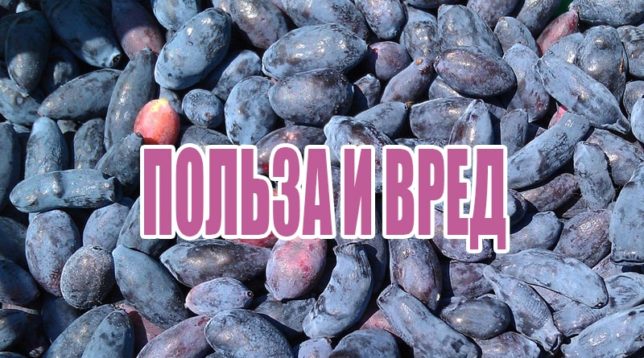
Honeysuckle can be considered a universal product, it helps with various diseases. Its berries, rich in trace elements, vitamin C and many others, ripen earlier than anyone else and help the body in the fight against spring vitamin deficiency.
Beneficial features
The berries of the plant are not only tasty, but also healthy, their juice helps to alleviate the condition of patients with burns and ulcers, and the decoction will help to maintain normal pressure, just drink it before bedtime, as it has a strong diuretic effect.
A decoction made from flowers and leaves can treat a cold. Honeysuckle will help with gastrointestinal diseases, for example, it can fight with ulcers and gastritis, eliminate capillary fragility, cleanse blood vessels and rejuvenate the body. And mashed with sugar will become a vitamin supplement for the body during the autumn-winter period.
Harm and contraindications
Honeysuckle berries have no serious contraindications, they should not be overeating, and should not be given to young children. Rarely, some people may experience individual intolerance, which is manifested by itching, redness, skin rashes, muscle cramps, and indigestion. The golden rule is that a measure is needed in everything.
Honeysuckle multicooker jam
Try making a prescription for jam in a pressure cooker or multicooker from honeysuckle with redcurrant juice and tea rose petals.
Ingredients:
- Honeysuckle - 1 kg;
- Sugar - 1 kg;
- Petals - 200 g;
- Currant juice - 200 ml.
- Set the mode of "Frying" and cook the syrup from juice and sugar.
- The honeysuckle has an exquisite taste, pink petals will help to add interesting shades to it. Pour the honeysuckle into the syrup, wrap the petals in gauze, put in a slow cooker, close the lid.
- Turn off the heat after 5 minutes, leave the lid closed, let the jam simmer for another hour.
- Pour into small jars, close the lids tightly. Check for leaks: carefully, so as not to burn yourself, turn the jar over, if there are no bubbles, everything is fine. Cover the jam, let cool.
It turns out amazingly beautiful jam: a dark blue mass of jelly, in which, like bright sparkles, red berries of honeysuckle. The fragrance of a rose, after opening the lid, still left no one indifferent. It's nice to remember the summer in a winter evening, over a cup of fragrant tea with this magic jam.
We look forward to the arrival of spring, the appearance in the garden of the first greens, berries and fruits, but they are still far away. This is where honeysuckle will help, which begins to bloom as soon as the snow comes down, and in June it will give fragrant and healthy berries for care and maintenance.

